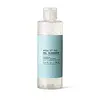What's inside
What's inside
 Key Ingredients
Key Ingredients

 Benefits
Benefits

 Ingredients Side-by-side
Ingredients Side-by-side

Water
Skin ConditioningCoco-Glucoside
CleansingSodium Lauroyl Sarcosinate
CleansingXanthan Gum
EmulsifyingCeramide AP
Skin ConditioningCeramide NP
Skin ConditioningCeramide Ns
Skin ConditioningCeramide EOP
Skin ConditioningRosa Centifolia Flower Water
Skin ConditioningTocopherol
AntioxidantSodium Cocoyl Apple Amino Acids
Skin ConditioningFucus Vesiculosus Extract
EmollientSodium Benzoate
MaskingCitric Acid
BufferingCeteareth-25
CleansingCetyl Alcohol
EmollientBehenic Acid
CleansingCholesterol
EmollientCaprooyl Phytosphingosine
Skin ConditioningCaprooyl Sphingosine
Skin ConditioningHexylene Glycol
EmulsifyingTetrasodium Glutamate Diacetate
Potassium Sorbate
PreservativeEthylhexylglycerin
Skin ConditioningPhenoxyethanol
PreservativeAscorbyl Palmitate
AntioxidantWater, Coco-Glucoside, Sodium Lauroyl Sarcosinate, Xanthan Gum, Ceramide AP, Ceramide NP, Ceramide Ns, Ceramide EOP, Rosa Centifolia Flower Water, Tocopherol, Sodium Cocoyl Apple Amino Acids, Fucus Vesiculosus Extract, Sodium Benzoate, Citric Acid, Ceteareth-25, Cetyl Alcohol, Behenic Acid, Cholesterol, Caprooyl Phytosphingosine, Caprooyl Sphingosine, Hexylene Glycol, Tetrasodium Glutamate Diacetate, Potassium Sorbate, Ethylhexylglycerin, Phenoxyethanol, Ascorbyl Palmitate
Water
Skin ConditioningSodium Cocoyl Glutamate
CleansingDisodium Cocoyl Glutamate
CleansingHydroxypropyl Starch Phosphate
Coco-Glucoside
CleansingGlycol Distearate
EmollientGlycerin
HumectantCeramide NP
Skin ConditioningCeramide AP
Skin ConditioningCeramide EOP
Skin ConditioningPhytosphingosine
Skin ConditioningCholesterol
EmollientSodium Lauroyl Lactylate
EmulsifyingXanthan Gum
EmulsifyingAlthaea Officinalis Leaf/Root Extract
EmollientCalendula Officinalis Flower Extract
MaskingArginine
MaskingSerine
MaskingThreonine
Decyl Glucoside
CleansingPhenoxyethanol
PreservativeEthylhexylglycerin
Skin ConditioningWater, Sodium Cocoyl Glutamate, Disodium Cocoyl Glutamate, Hydroxypropyl Starch Phosphate, Coco-Glucoside, Glycol Distearate, Glycerin, Ceramide NP, Ceramide AP, Ceramide EOP, Phytosphingosine, Cholesterol, Sodium Lauroyl Lactylate, Xanthan Gum, Althaea Officinalis Leaf/Root Extract, Calendula Officinalis Flower Extract, Arginine, Serine, Threonine, Decyl Glucoside, Phenoxyethanol, Ethylhexylglycerin
 Reviews
Reviews

Ingredients Explained
These ingredients are found in both products.
Ingredients higher up in an ingredient list are typically present in a larger amount.
Ceramide AP is formally known as Ceramide 6.
Ceramides are intercellular lipids naturally found in our skin that bonds dead skin cells together to create a barrier. Having a strong skin barrier leads to more firm and hydrated skin.
They are known for their ability to hold water and thus are a great ingredient for dry skin. By bolstering the skin ceramides act as a barrier against irritating ingredients. This can help with inflammation as well.
If you would like to eat ceramides, sweet potatoes contain a small amount.
Read more about other common types of ceramides here:
Ceramide NP
Ceramide EOP
Ceramide EOP is formally known as Ceramide 1 and Ceramide 1 A.
EOP stands for a linked Ester fatty acid, a linked Omega hydroxy fatty acid, and the Phytosphingosine base.
Ceramides are intercellular lipids naturally found in our skin. They bind dead skin cells together to create a barrier. The ceramides in our skin have the ability to hold water to keep our skin hydrated.
Ceramides are an important building block for our skin barrier. A strong skin barrier helps with:
If you would like to eat ceramides, sweet potatoes contain a small amount.
Read more about other common types of ceramides here:
Learn more about Ceramide EOPCeramide NP is a type of ceramide and formally known as ceramide 3.
Ceramides are intercellular lipids naturally found in our skin that bonds dead skin cells together to create a barrier. They are known for their ability to hold water and thus are a great ingredient for dry skin.
Ceramides are an important building block for our skin barrier. A stronger barrier helps the skin look more firm and hydrated. By bolstering the skin ceramides act as a barrier against irritating ingredients. This can help with inflammation as well.
If you would like to eat ceramides, sweet potatoes contain a small amount.
Read more about other common types of ceramides here:
Ceramide AP
Ceramide EOP
Cholesterol is a class of organic molecules called lipids. It helps hydrate your skin and is essential to having a healthy skin barrier.
Our skin naturally contains cholesterol in the outermost layer. Besides cholesterol, it also contains ceramides and fatty acids. Cholesterol makes up about 1/4 of your skin's outer layer and barrier. Your skin barrier is responsible for keeping allergens and microbes out. Having a healthy skin barrier is also responsible for keeping your skin firm and plump.
Our bodies use cholestrol to create vitamin D, steroid hormones, and more.
Learn more about CholesterolCoco-Glucoside is a surfactant, or a cleansing ingredient. It is made from glucose and coconut oil.
Surfactants help gather dirt, oil, and other pollutants from your skin to be rinsed away.
This ingredient is considered gentle and non-comedogenic. However, it may still be irritating for some.
Learn more about Coco-GlucosideEthylhexylglycerin (we can't pronounce this either) is commonly used as a preservative and skin softener. It is derived from glyceryl.
You might see Ethylhexylglycerin often paired with other preservatives such as phenoxyethanol. Ethylhexylglycerin has been found to increase the effectiveness of these other preservatives.
Phenoxyethanol is a preservative that has germicide, antimicrobial, and aromatic properties. Studies show that phenoxyethanol can prevent microbial growth. By itself, it has a scent that is similar to that of a rose.
It's often used in formulations along with Caprylyl Glycol to preserve the shelf life of products.
Water. It's the most common cosmetic ingredient of all. You'll usually see it at the top of ingredient lists, meaning that it makes up the largest part of the product.
So why is it so popular? Water most often acts as a solvent - this means that it helps dissolve other ingredients into the formulation.
You'll also recognize water as that liquid we all need to stay alive. If you see this, drink a glass of water. Stay hydrated!
Learn more about WaterXanthan gum is used as a stabilizer and thickener within cosmetic products. It helps give products a sticky, thick feeling - preventing them from being too runny.
On the technical side of things, xanthan gum is a polysaccharide - a combination consisting of multiple sugar molecules bonded together.
Xanthan gum is a pretty common and great ingredient. It is a natural, non-toxic, non-irritating ingredient that is also commonly used in food products.
Learn more about Xanthan Gum